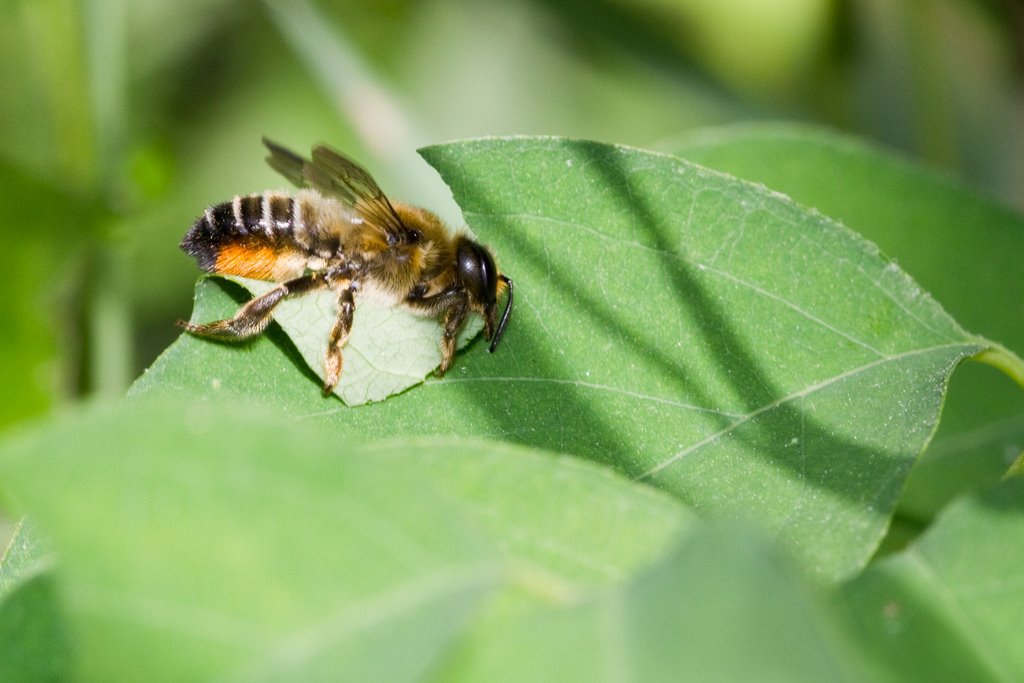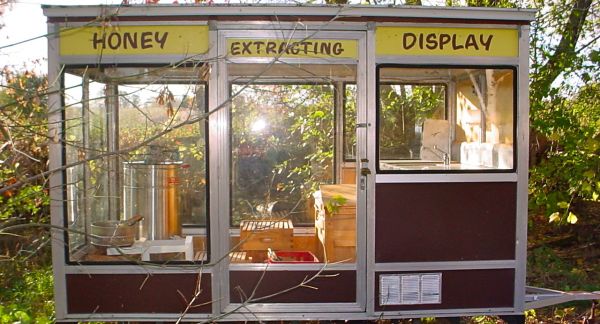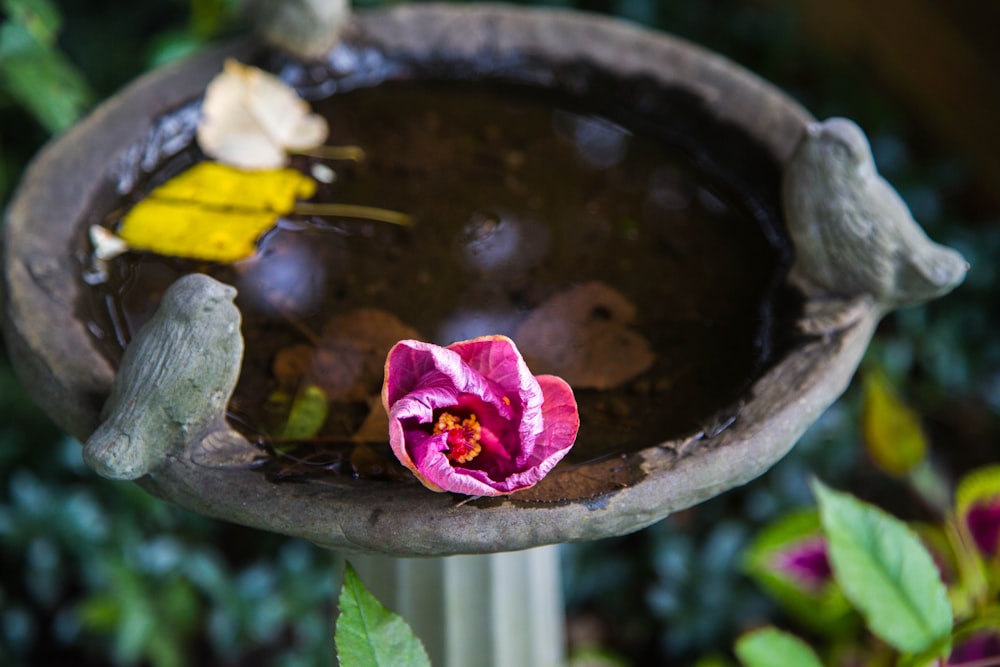With the warm weather in full bloom, the #SaveTheBees movement is gaining traction again due to the growing concern caused by the rapid decline of various bee populations. There are several threats causing the decline of bee populations: harmful pesticides that paralyze and kill bees, unethical industrial beekeeping practices, and invasive animals and plants, and climate change. Ontario is home to 400 bee species, and 16 of those species are bumble bees which are native. Additionally, carpenter bees, leaf-cutter bees, mining bees, and sweat bees are also native to Ontario! Many people think honeybees are native to Ontario, however they are imports to North America to produce honey.
So now that we know more about the variety of bees found in Ontario, what can we do to protect our bees and promote natural habitats and reproduction?

Leaf-cutter bee by Planet Bee Foundation
1. Purge those pesticides
Pesticides are one of the leading threats to pollinators worldwide, so it is best to do away with them. Thankfully, there are many natural alternatives to control pests, including garlic or salt spray, soap and orange spray, and chili spray. However, even natural sprays can still be harmful to pollinators so make sure to use them outside of foraging hours.

Woodland sunflowers by Sid Vogelpohl
2. Plant a bee-friendly garden
Climate change is causing large habitat loss for bees. By planting flowers and other natural vegetation that are native to southwestern Ontario, you can cultivate a garden rich in nectar and pollen for bees. You don't need a lot of space either, window boxes, flower pots and planters work well! Alternatively, you can get involved with local organizations or governments to enrich public spaces. Here is a list native trees & shrubs and native wildflowers & grasses found in southwestern Ontario!
Grey birdbath by Sebastian Kurpiel
3. Quench their thirst
Foraging and collecting nectar is no easy task, and bees find themselves becoming thirsty fast. Luckily, there are plenty of ways to provide bees with a big sip of refreshing water: a shallow bird bath, a small bowl with clean water, or a tiny water basin are all great ways to give bees some drinking water. You don't need a large backyard either, the front porch or on a balcony works just fine!

Honey extracting display by Ontario Beekeepers' Association
4. Support local beekeepers and organizations
One of the best ways to support bees is by getting to know your local beekeepers and getting involved with organizations focused on the health and safety of bees, and you can start by checking out some of our member organizations that support pollination & beekeeping initiatives right here in London:
- LOLA Bees (London Ontario Learning Apiary), an urban beekeeping project in the Old East Village that aims to practice natural beekeeping, develop community workshops and experiences, and approach beekeeping as an act of environmental stewardship.
- London Urban Beekeepers Collective (LUBC), which is dedicated to learning about bees and beekeeping, and to providing public education about bees and their role in the ecosystem.
- Pollinator Pathways Project, which aims to create a network of pollinator habitat within London through the implementation of gardens and by empowering citizens to take part in their gardening events.
There are also many other organizations in Ontario to look into if you're wanting to get involved, including Ontario Bee Rescue, Ontario Beekeepers' Association, and local beekeepers' associations.
Follow us on social media and sign up for our e-newsletter to stay updated on how you can help the environment in London!

